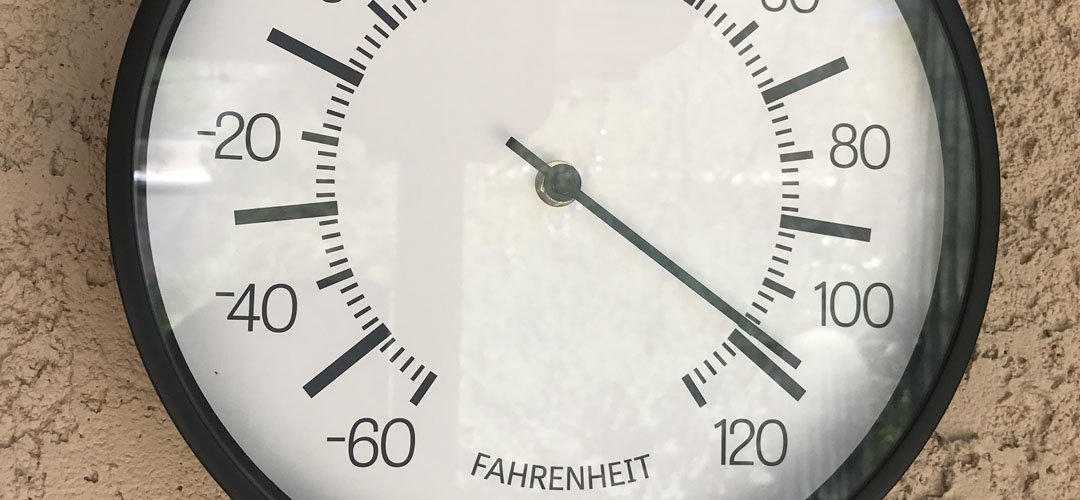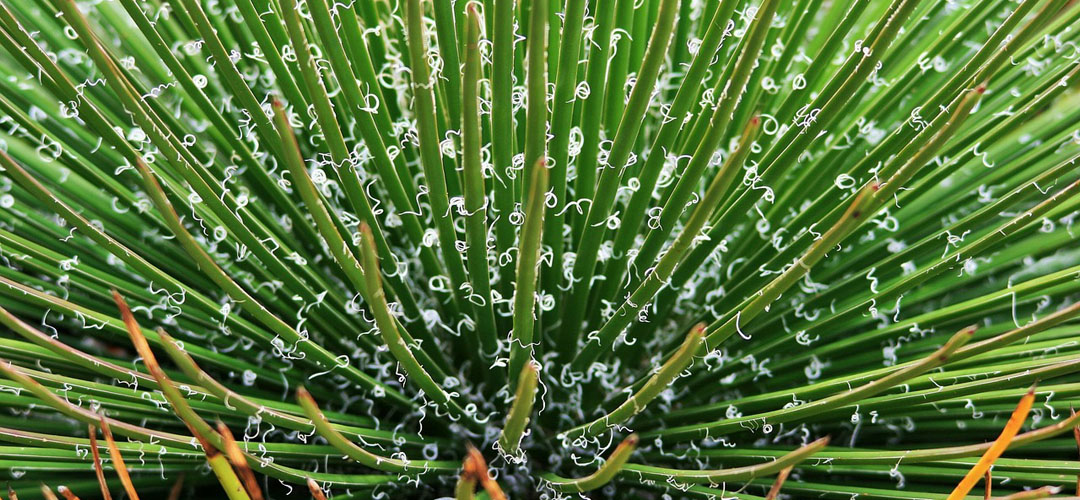What To Do In Your Tucson-Area Yard In June
June is all about watering! There aren’t a whole lot of things that can be planted this month; instead, the focus is on keeping your plants, shrubs, and trees alive, or harvesting the vegetables that are ready. While native plants and trees will do better than other plants, newly-planted (within the past 2 years) trees and shrubs – even if they’re native or desert-adapted – will need some additional watering.

Rising temperatures during June mean that your plants and garden need more water – and possibly more shade
How much should you water?
Check your plants twice a day.
- If plants are wilting in the morning, they need more water. Increase the frequency of your watering (the amount generally shouldn’t change, assuming that you have your irrigation properly set to fully moisten the soil down to the plants’ root zones).
- If plants are wilting later in the day, it usually means they can’t absorb enough water to cool themselves down. Plants lose moisture through evapotranspiration from small pores in their leaves (called stomata); moisture loss increases with increasing temperatures and in windy conditions. Some plants, particularly those with large leaves (such as zucchini) are notorious for afternoon wilting. But once the sun sets and temperatures start to drop a bit, wilting plants should recover if they’re getting enough water.
- If plants wilt and don’t recover when watered, it’s likely due to a problem with the plant itself. For example, wilting in tomatoes and peppers can be caused by a virus (such as with “curly top disease”) or a soil-borne pathogen like root knot nematodes. Contact the Pima County Master Gardeners Plant Clinic for help in diagnosing the problem and finding a solution.
Vegetable beds will probably need to be watered at least once a day.
Many non-native cactus, as well as cactus in pots, will need watering once a week. Cactus in containers may even need watering up to twice a week, depending on the size of the container and how much sun it gets. Saguaros generally do not need supplemental watering (read our blog post all about saguaros for more information).
Check container plants with a water meter to see if soil in the root area has dried out; the surface usually dries quickly but potting mix in the center of the container (especially in larger containers) may retain water longer. If you don’t have have a water meter, a general rule of thumb is that most container plants need to be watered twice daily in June. You may also want to move them to an area with afternoon shade to reduce water loss, if possible.
To ensure that adequate water is reaching the root zone of shrubs and trees (2 – 3 feet below the surface), use a soil probe to test the soil after irrigating.
Please make sure that you stay hydrated as well!
Continue Feeding Plants
With all of the watering done in June, many nutrients are leached away from around your plants.
Use a water-soluble fertilizer to feed container plants at half strength every 2 weeks.
Fertilize palm trees this month.
Fruit and vegetable plants may also benefit from fertilization. In organic gardens, a side-dressing of compost or application of fish emulsion may do the trick.
Don’t Prune in June
Most plants should not be pruned this month, as they slow down growth (a kind of summer dormancy) and don’t have as much energy to heal pruning cuts. Additionally, pruning can expose new parts of the plant to more sunlight and can cause the plant to burn from the added sun exposure.
Light pruning of trees and shrubs is okay to remove any dead branches but save heavier pruning for the cooler months in fall.
Add Shade Using Shade Cloth
Many kinds of fruits, vegetables, plants, and flowers benefit from shade to survive our summer heat. Use shade cloth or plan your garden in an area that gets afternoon shade.
Many vegetables grown in Tucson will benefit from 30% to 40% UV-blocking shade cloth, especially sun-sensitive plants like tomatoes, sweet peppers, and cucumbers that are prone to sunscald. Check the details on whatever shade cloth you buy – anything beyond 50% will likely block too much sun to be able to produce a good harvest of ripe vegetables or fruit. Use stakes, poles, wire cages, or other structures to hold the shade cloth away from the plants, and be sure to attach it securely so it doesn’t blow away!
If you’re looking for other ways to add shade to your Tucson yard, check out this blog post: How to Create Shade in Your Tucson Yard.
A Note About Tucson Planting and Growing Seasons
As you can see in this graphic from Tucson Organic Gardeners, June planting should really only happen during the first half of the month (although it’s best to get everything planted before June, if possible). After that, it is best to wait until the second half of July (July 15 and later) when temperatures start to cool a bit, and humidity increases with the monsoon season. Traditionally, monsoon season runs from June 15 through September 15, although we seem to be experiencing it later in the summer in recent years. Monsoon season drastically changes the weather, meaning that growing and planting must adjust as well.
Sow or Transplant Herbs and Vegetables
There are fewer types of vegetables that can be planted this month, but there are still some!
Before you plant anything new, be sure to harvest and remove your early season crops, as most winter-grown vegetables and herbs will not survive our summer heat.
Plants with a smaller fruit size (cherry tomatoes, for example) have a better chance of growing successfully in the June heat. Also, keep in mind the estimated time to maturity when you pick a variety – this information should be on the seed packet.
Some vegetables won’t set or mature fruit while temperatures are over 90 degrees (tomatoes are a good example of this). You have four options for dealing with this:
- Keep up regular watering and maintenance; when temperatures cool again, they should produce once more.
- Cut the plant back severely so it uses less water in the short-term but grows back over the summer to start producing when temperatures drop.
- Remove the plants. Start new ones from seed indoors and transplant them in late July/August.
- Remove them and replace now with one of the options below.
Sow these from seed before mid-June
- Cantaloupe
- Corn
- Green Beans
- Summer Squash
- Native melons
- Armenian Cucumber
- Okra
- Black-Eyed Peas
- Chinese Pole Beans (“yard-long beans”)
- Pumpkin
- Cowpeas
- Squash
- Zucchini
Squash may need to be hand-pollinated (here’s a YouTube video that explains the process).
Transplant these as seedlings before mid-June
- Eggplant
- Peppers
- Pumpkin
- Basil
- Marjoram
- Oregano
- Rosemary
- Thyme
- Mint
- Sage
- Sweet Potatoes (from sweet potato slips)
Tomatoes and peppers can be started from seed indoors to prepare for monsoon planting.
 More Bugs Are Out and About…
More Bugs Are Out and About…
The hot, dry weather brings out more insect pests, including spider mites. Try spraying affected plants with water in the evening to remove dust (spider mites like dust!) and wash off spider mites. Often, that’s all that’s needed although you may need to do it every few days.
You may notice orange aphids on milkweed plants. A quick blast of water from a garden hose usually knocks off most of them, although milkweeds are well-adapted to deal with these sap-sucking pests and will do fine without any intervention from you.
Another common sighting in June is chewed up citrus leaves. If you look closely, you’ll see something that looks like bird droppings on the leaves. These are the larvae of the giant swallowtail butterfly, often called orange dog caterpillars. This is another case of an insect that causes only aesthetic damage; they only eat a few leaves during their lifetime and are susceptible to naturally occurring parasites and predators so control is not necessary. If you have a smaller citrus tree, you can minimize any damage by removing some of the eggs by hand before they hatch (just brush them off).
At night, you may see flying beetles swarming around outdoor lights. These beetles (called May beetles, June beetles, or chafer beetles) lay their eggs in soil, producing “white grubs” that feed on roots of grass and some annual plants. Many other types of grubs eat only decaying material in the soil, but white grubs can do significant damage. Try using beneficial nematodes for an organic control option or, if necessary, there are grub-killing pesticides available from lawn and garden supply stores.
Other Yard & Garden Tasks
- Dead-head garden flowers to encourage more blooms. Cut them, don’t pull them off. Marigolds, zinnia, geraniums, blanket flowers, and roses are all good candidates for deadheading.
- If you have a lawn, mow the grass on the taller side, the blades will benefit from the shade
- If you didn’t fertilize your citrus trees around Memorial Day, fertilize as close to the beginning of this month as possible.
- Keep an eye on citrus; remove any suckers you see.
We hope these tips help you enjoy your Tucson-area yard and garden this month! Have fun!